Foods that can cause acne and other skin conditions
Bad news for those who love a late-night fast-food binge: What you put in your body is as important for your skin as what you put on it. Antioxidant-rich foods are some of the best foods for your skin and a few simple diet tweaks can help brighten, plump, or lock in moisture. Other foods that can trigger acne in some people, also can cause redness and irritation. We spoke with dermatologists about the foods they avoid in the name of having clear, healthy-looking skin.
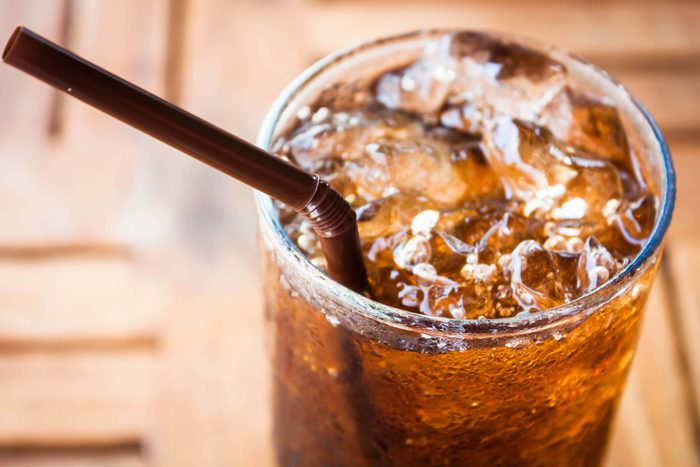
Soda dehydrates and ages your skin
You’ve certainly heard to skip the soda (yes, diet soda, too) for your waistline, but turns out it isn’t doing your skin any favors, either. “Both diet and regular soda can increase inflammation of the skin,” says Doris Day, MD, a board-certified dermatologist in New York City and author of Beyond Beautiful: Using the Power of Your Mind and Aesthetic Breakthroughs to Look Naturally Young and Radiant. “It’s one of my least favorite products and I wish we could ban it. There are so many delicious alternatives that are often less expensive.” Among them: fruit-infused seltzer water. Add berries, lemon, lime, or orange slices to plain seltzer. (Want more advice? These are the 17 skin-care tips dermatologists follow themselves.)

Spicy foods can make rosacea worse
If you have rosacea, you might want to take a pass on Taco Tuesday, says Joshua Zeichner, MD, director of cosmetic and clinical research in dermatology at Mount Sinai Hospital in New York City. “Any foods that cause your blood vessels to dilate and make you flush may cause a flare,” he says, echoing the findings of a review of studies published in 2017 in the journal Dermatology Practical & Conceptual. Researchers found that many people with rosacea report episodes of flushing after eating spicy foods or drinking alcohol or hot beverages. But tacos aren’t the only culprit. Here are other foods that can trigger rosacea.
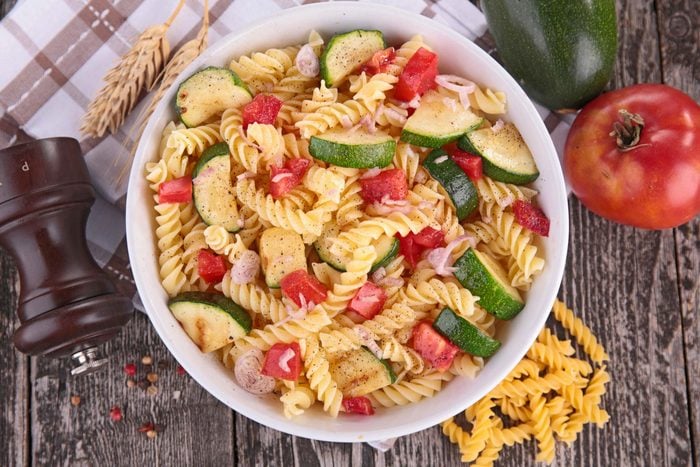
Pasta can cause acne-related inflammation
Actually, pasta isn’t the only villain. There’s a link between inflammation and any refined carb—we’re talking white rice, bread, bagels; all of which are high on the glycemic index. (The glycemic index is a way to measure a food’s effect on blood sugar.) A study published in 2016 in the Journal of the American Academy of Dermatology found a connection between acne and high glycemic index foods.
“Sugar is tied to inflammation,” explains Dr. Day. “You want to manage your glycemic index to help minimize inflammation. The easiest way to do this is to eat a plant-based, whole food diet as much as possible.” For carb lovers, that means brown rice, whole grain bread, and whole wheat pasta. She also recommends intermittent fasting, a way of eating that involves periods of voluntary abstinence from food and drink. “It has great benefits for skin health,” adds Dr. Day. “It may be an indirect benefit, but it’s still powerful. I do a daily 16- to 18-hour fast.”
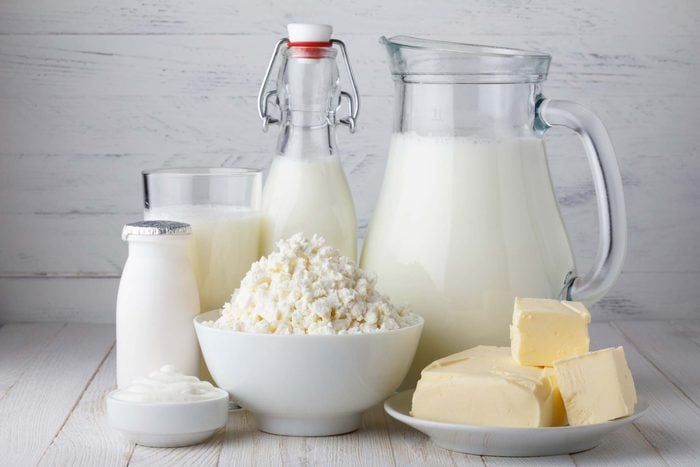
Dairy can cause acne
Dermatologists can often tell when a patient has eaten too much dairy. Here’s why: Research, including a large review of studies published in 2017 in the Journal of Clinical and Aesthetic Dermatology, shows a connection between adult acne in women and consumption of not just high glycemic index foods (like white pasta), but also cow’s milk (particularly skim milk). That’s because dairy can be a “pro-inflammatory,” says cosmetic dermatologist Paul Jarrod Frank, MD, author of The Pro-Aging Handbook. Which means it can “exacerbate any condition, like acne, that involves inflammation of tissue.”
Worth noting: Research showing a connection between dairy and acne implicates cow’s milk specifically, says Dr. Day, but “does not seem to apply to sheep or goat sources of milk, yogurt, or cheese.” Thinking of starting a dairy-free diet? This is what happens if you stop eating dairy.
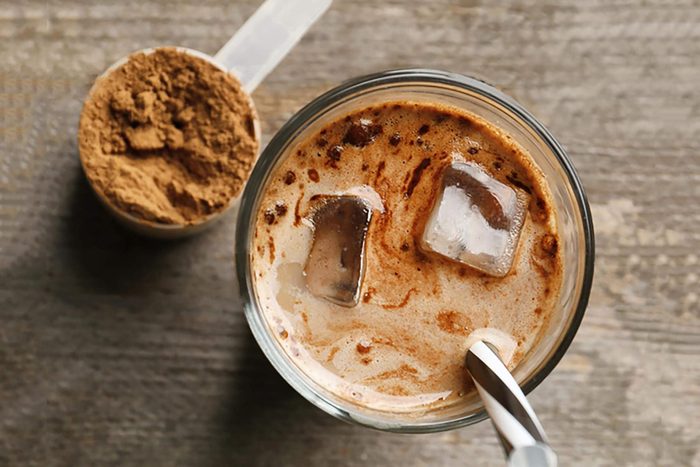
Whey protein shakes can cause acne flare-ups
Protein shakes are great for building and repairing your muscles after an intense weight-training session, but research suggests some types of protein may throw your skin out of whack. In particular, whey protein has been shown to cause acne flare-ups, according to a study published in 2017 in Health Promotion Perspectives. Instead, opt to eat these 8 foods for beautiful skin.
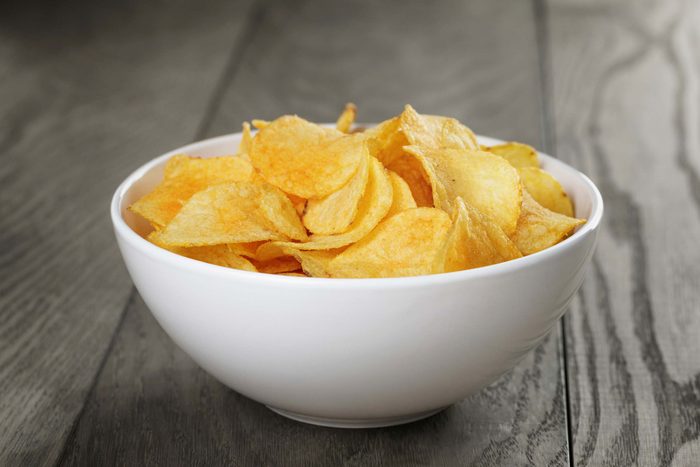
Potato chips can increase skin inflammation
Have you ever seen a dermatologist (or a celebrity, or a plastic surgeon, or anyone with fabulous skin) eating processed snacks like potato chips? Neither have we. “We’re still working on proving it, but it is becoming more accepted among dermatologists that foods have an effect on the skin and specifically on acne,” says Dr. Day. “Eating greasy foods does not mean the grease will end up on your skin and cause a breakout, but eating highly processed foods that are high in trans fats may have an impact on glycation [when sugar binds with proteins and forms harmful substances], inflammation, and breakouts of acne or rosacea.” Bottom line: Avoid the snack aisle. Instead, try these healthy snacks to satisfy the munchies.
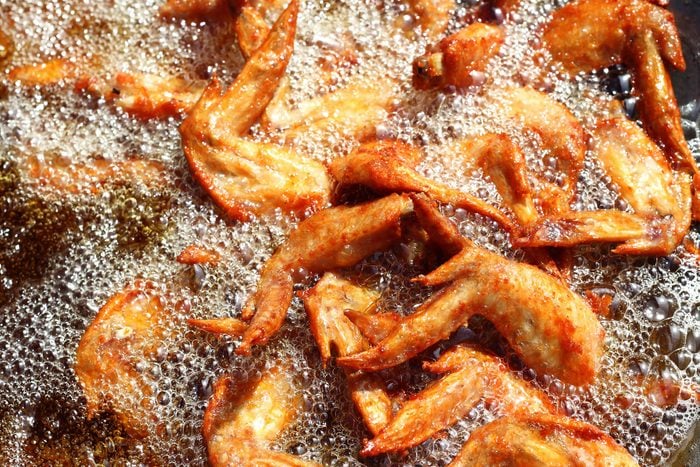
Fried chicken can, too
Your taste buds probably love fried foods, but your complexion hates it. Even though legal restrictions have drastically reduced the amount of trans fat allowed in foods, the dangerous fats still occur naturally and some added types can still sneak into your food and increase inflammation. Don’t miss the other reasons fried foods are bad for you (and how to make them healthier).

Sugar can make skin appear more wrinkled
Nothing wrong with the occasional treat, but overindulging on anything loaded with sugar can do a number on your skin. Why? Like all high-glycemic foods, they raise your blood sugar quickly, leading to inflammation and triggering glycation, which may stiffen collagen fibers; that can leave skin less plump and more wrinkled over time, says Dr. Zeichner. (Make sure you know the everyday habits that wreck your skin.)

